Leadership in Business: Analysis of Key Characteristics Report
VerifiedAdded on 2020/03/04
|5
|685
|53
Report
AI Summary
This report examines the key characteristics of effective leadership in a business context. The report emphasizes the importance of exemplary character, clear communication, setting clear directions and goals, and maintaining an optimistic outlook. It highlights the need for leaders to build trust and respect within their teams, providing a framework for understanding how these qualities contribute to successful leadership. The report also discusses the role of communication in managing organizations, the importance of clear objectives and goals, and the need for leaders to be decisive. It concludes by emphasizing the importance of prioritizing team needs and acting as a role model. The report references Adair (2013) and Day (2014), offering a foundation for understanding leadership principles. The report is available on Desklib, a platform offering AI-based study tools and resources for students, including past papers and solved assignments to aid in their studies.
1 out of 5
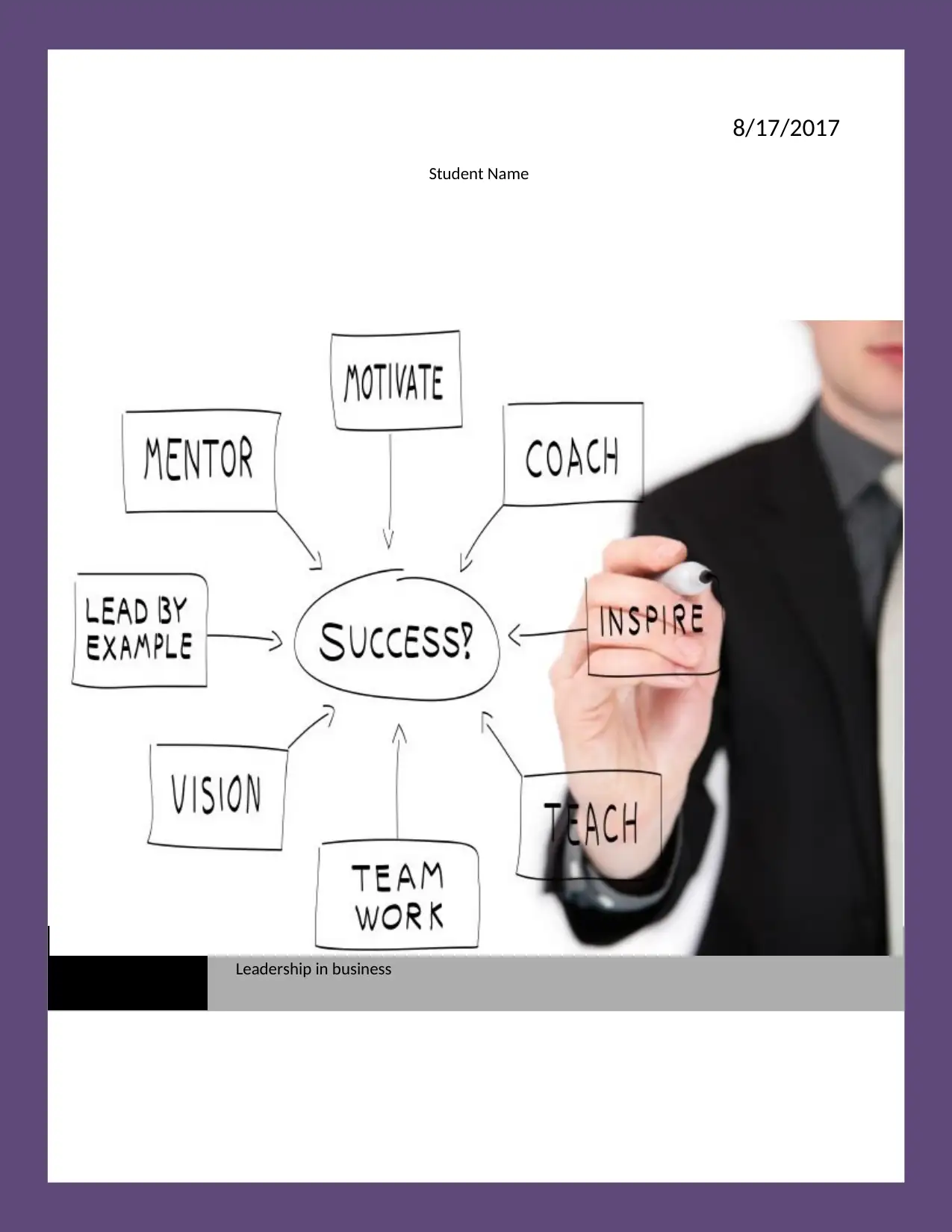
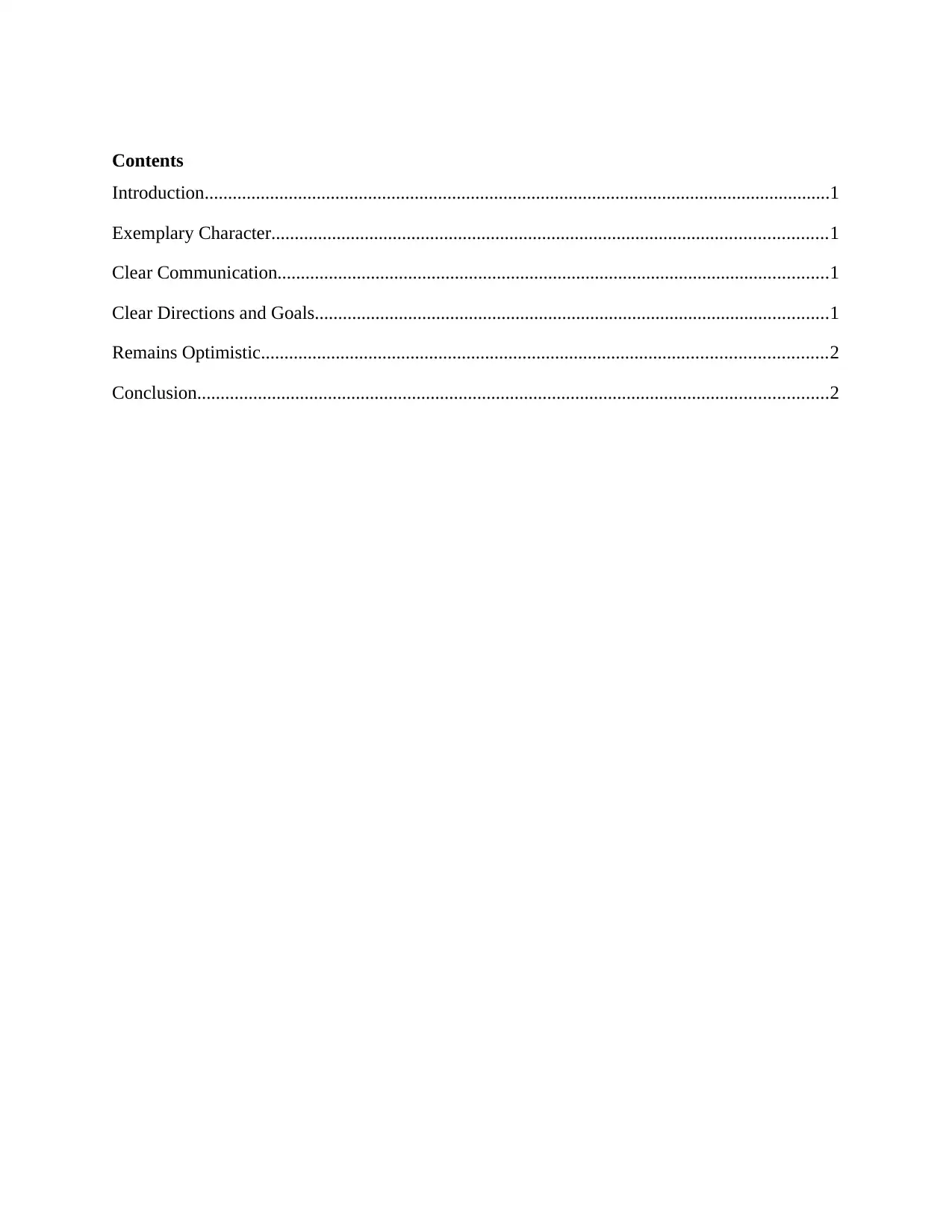
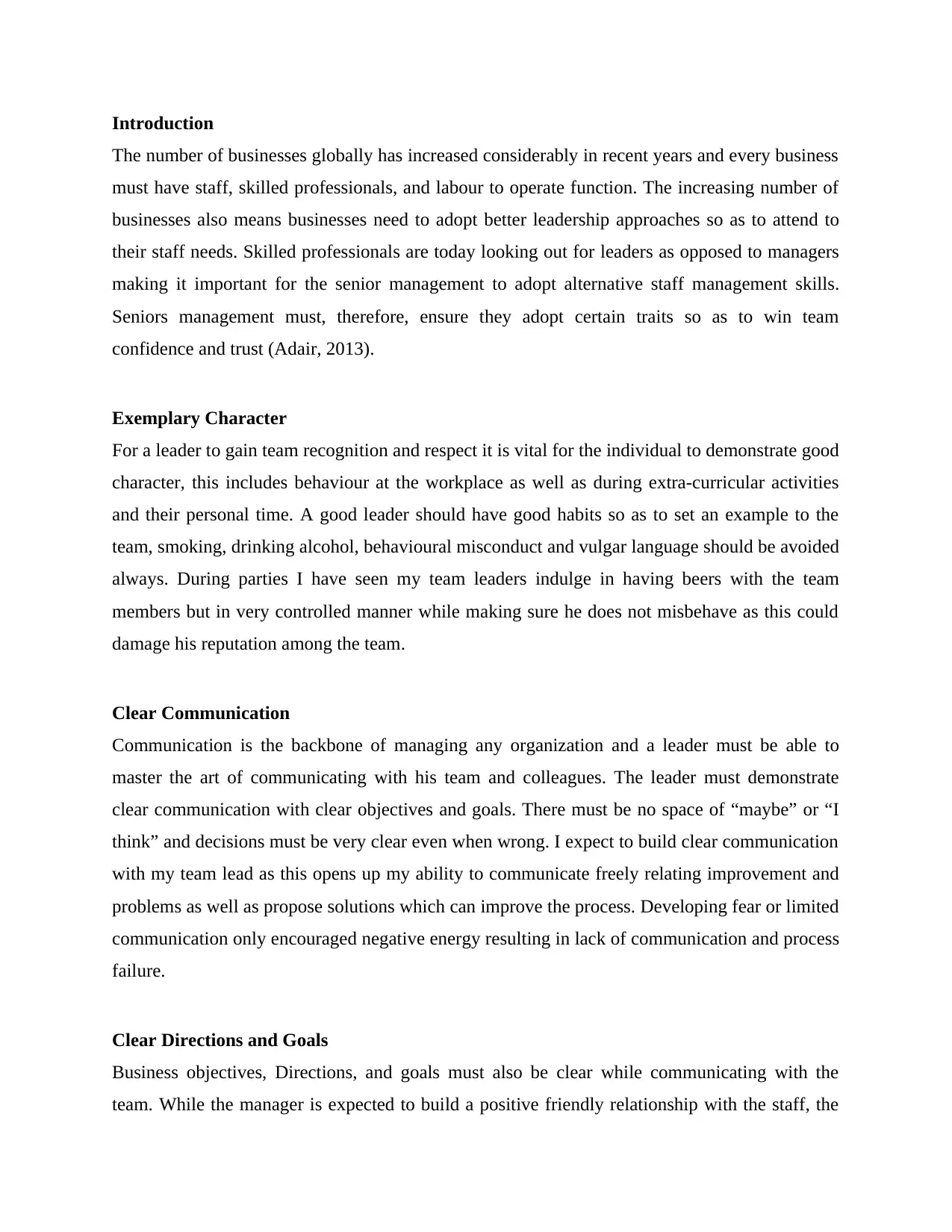

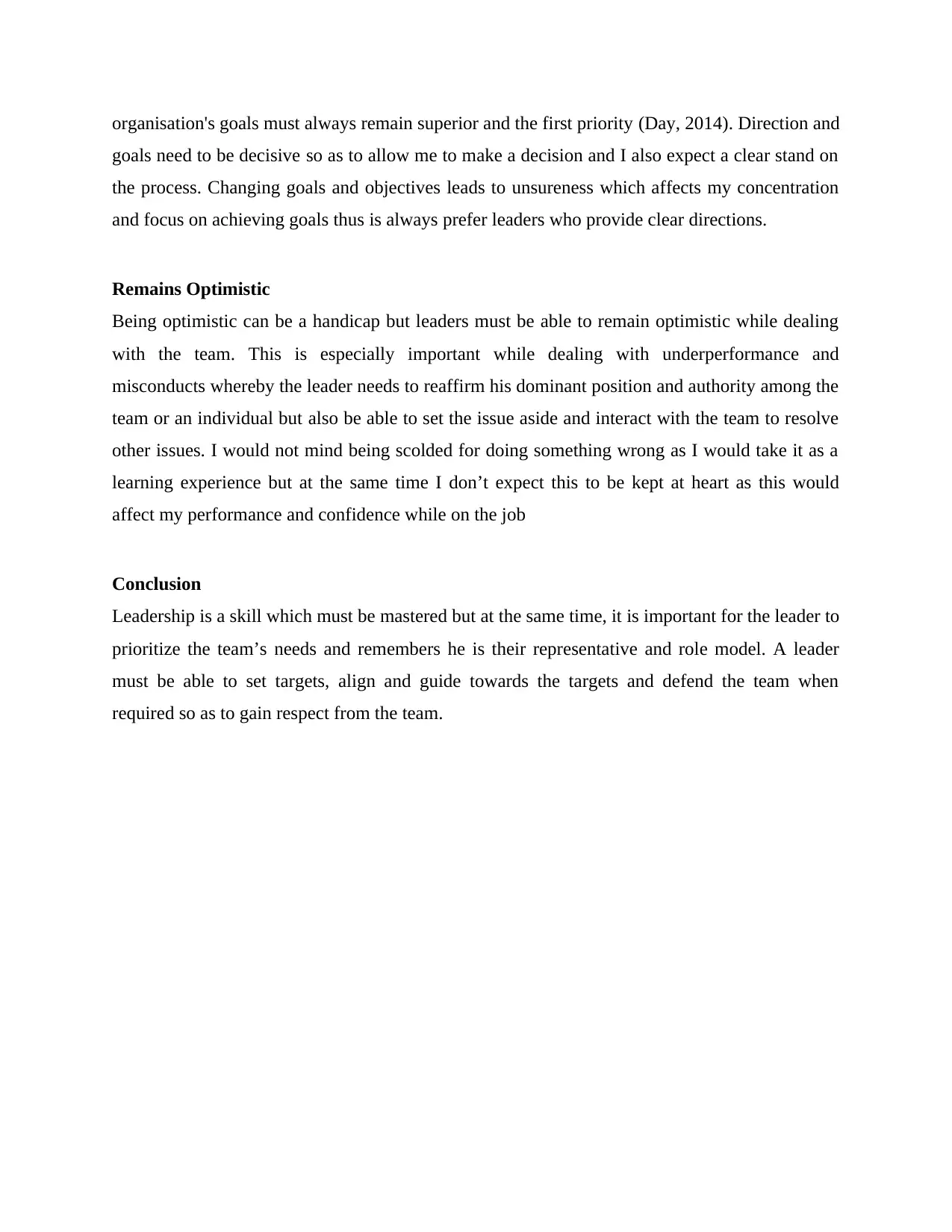
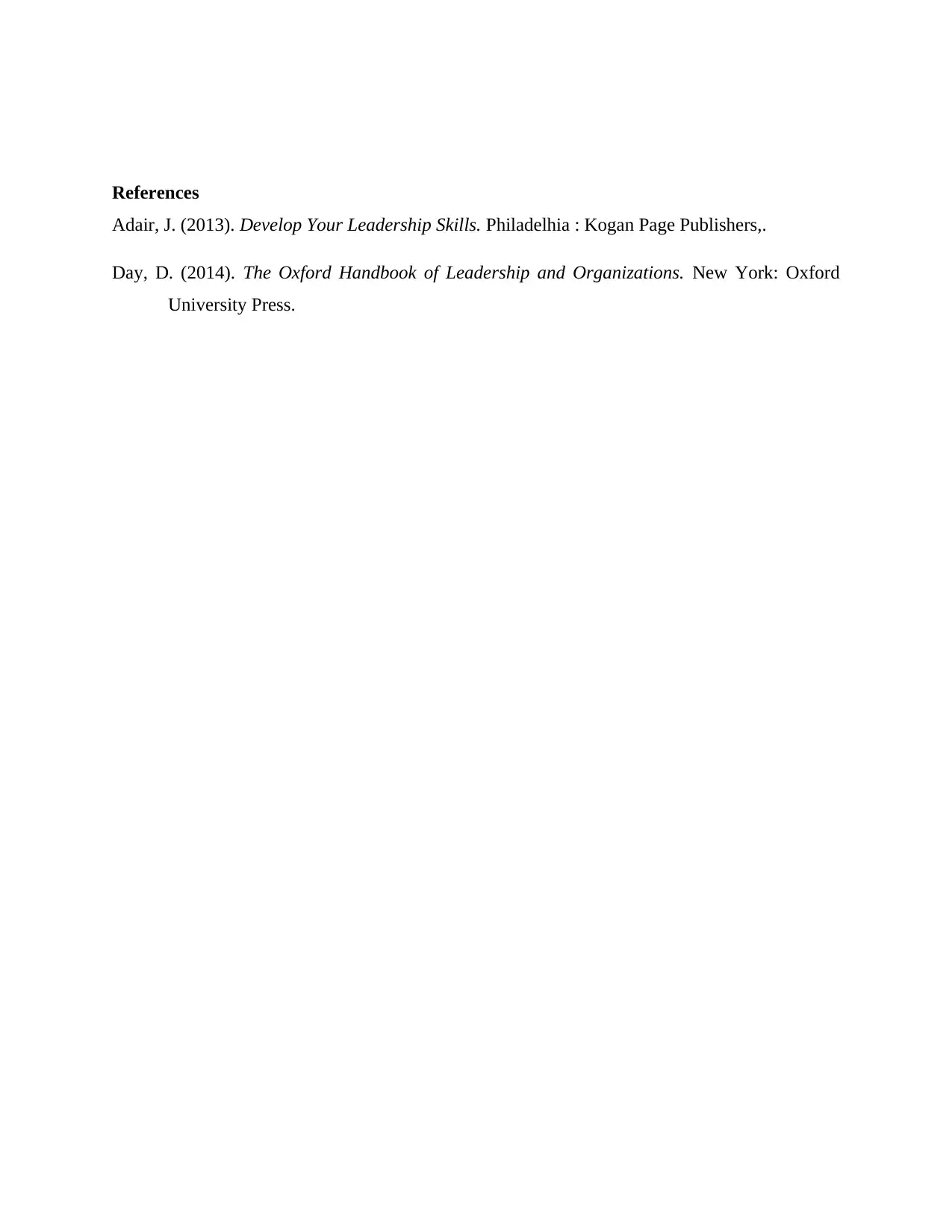





![[object Object]](/_next/static/media/star-bottom.7253800d.svg)